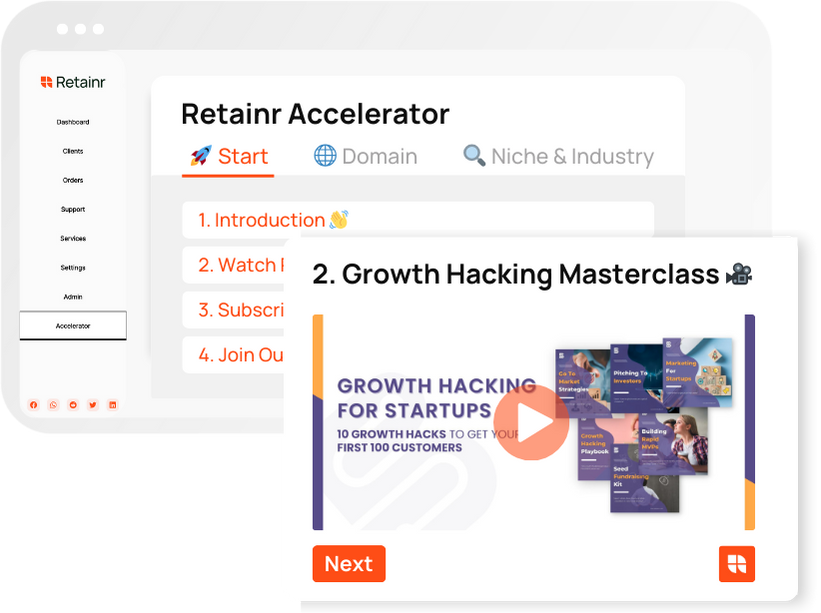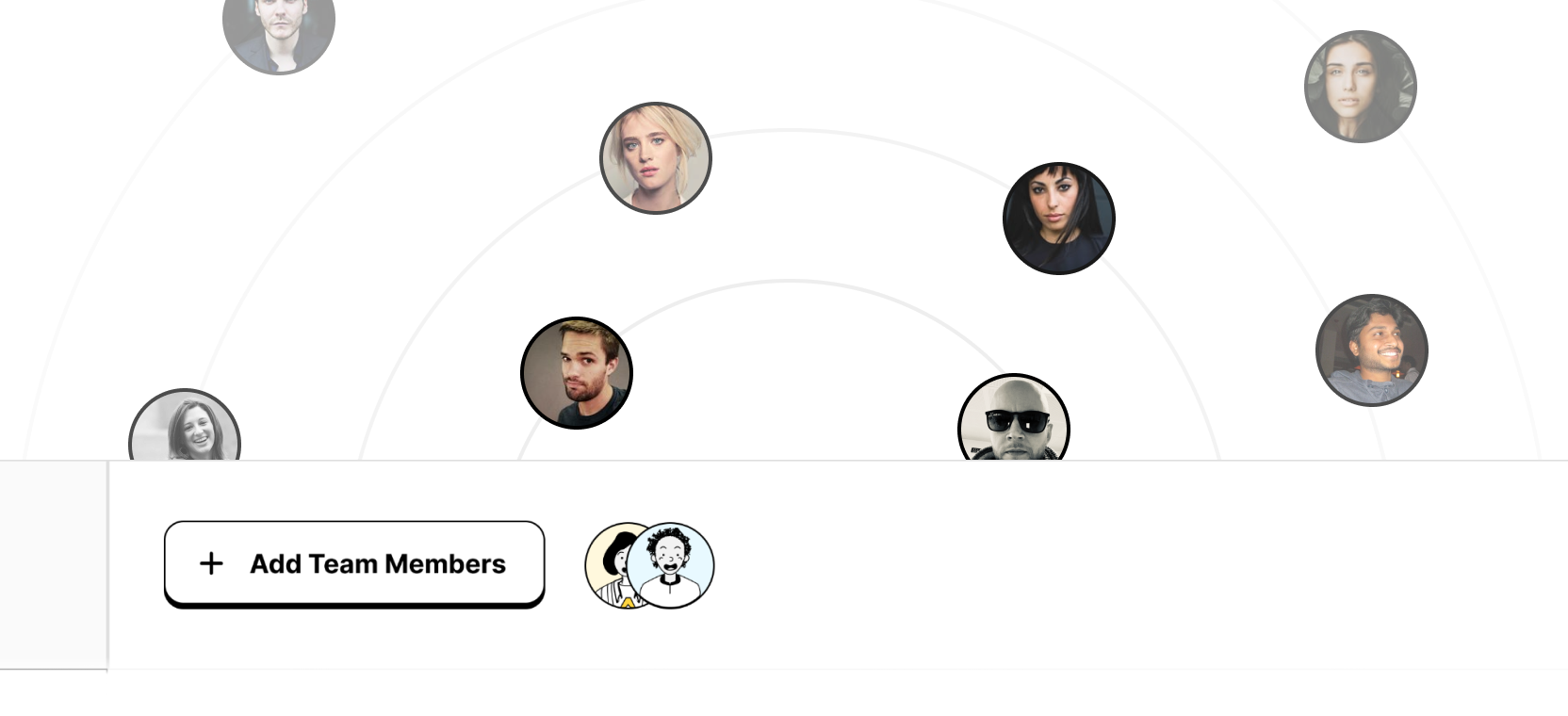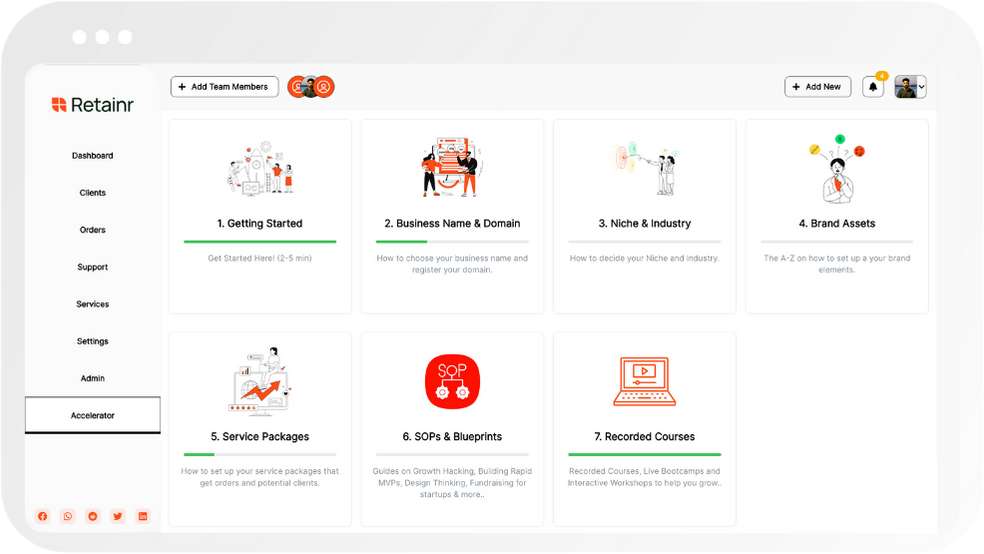
How to Develop a Chatbot Strategy
Build with Retainr
Sell your products and services, manage clients, orders, payments, automate your client onboarding and management with your own branded web application.
Get Started1. What steps are involved in developing a chatbot strategy?
Understanding the Steps in Developing a Chatbot Strategy
The development of an effective chatbot strategy requires a systematic approach with carefully thought-out steps to ensure its applicability across different scenarios and platforms. The first step requires identifying the purpose of the chatbot, be it providing general information, customer support, selling products or services, etc. After this, defining the audience is crucial; one must understand the demographic profile, their preferences, needs, and how they interact with bots.
Choosing the right platform is the next step, which has to align well with the target audience's habits, for instance, a business-oriented bot may be best suited on LinkedIn or Slack, while a lifestyle or retail bot might perform better on Facebook Messenger or WhatsApp. And now comes the technology and design part, which involves choosing between rule-based or Artificial Intelligence bots, according to purpose and platform.
A Structured Approach to Bot Creation
It is also necessary to establish a well-rounded team consisting of a project manager, designers, developers, and quality analysts. Simultaneously, understanding what type of bot you are building, that is, text-based or voice-enabled is necessary.
| Steps | Description |
|---|---|
| Identify Purpose | Determine the role and responsibility of the bot. |
| Define Audience | Analyse demographic profile, understand their preferences and habits. |
| Choose Platform | Select the right channel which the audience most uses or aligns with the purpose. |
| Technology and Design | Decide on using Rule-Based or AI for bot operations. |
Once the design and development are complete, the bottesting and tweaking are done as per the feedback. Without forgetting, taking care of integration with the chosen platform and proper launch are the final steps of a chatbot strategy.
2. How can a business benefit from a chatbot strategy?
Benefits of a Chatbot Strategy to Businesses
A well-implemented chatbot strategy offers numerous benefits to a business. Predominantly, it enhances customer interactions, increases operational efficiency, and provides valuable customer insights.
- Enhanced Customer Interactions: Chatbots are available 24/7, significantly increasing a business' availability to interact with customers. They can answer customer queries instantly, improving response time. Moreover, chatbots can handle thousands of inquiries simultaneously, thus ensuring no customer is left unattended.
- Increased Operational Efficiency: Chatbots deflect the majority of common customer inquiries, freeing up human agents to handle complex tasks. This leads to more productive use of resources because it decreases the workload of customer service staff.
- Valuable Customer Insights: Chatbots collect valuable data and insights on customer behaviour and preferences, which can be used to improve products and services.
Financial Implications of Chatbot Strategy
There are also substantial financial benefits associated with implementing a chatbot strategy. Primarily, it reduces operational costs, increases sales, and improves customer retention.
| Financial Aspects | How Chatbots Contribute? |
|---|---|
| Reduced Operational Costs | Chatbots manages minor queries without human intervention, leading to significant reductions in customer support costs. |
| Increased Sales | Chatbots can upsell and cross-sell by providing personalized product recommendations to customers, thereby increasing sales. |
| Improved Customer Retention | Through instant responses and always-available customer service, chatbots can enhance customer satisfaction, improving customer retention rates. |
Ultimately, a well-crafted chatbot strategy can boost a business's growth and overall success.
3. What factors should be considered when developing a chatbot strategy?
Understanding the End-User Needs
When building a chatbot strategy, your main focus should be on understanding the needs of your end-users. Identifying target audience's needs will guide the functionalities your chatbot needs to have. Key considerations include:
- Audience demographics: Analyze your audience in terms of age, technological understanding, language proficiency.
- User expectations: What do users want from the chatbot? Is it solving queries, providing product information or acting as a virtual assistant?
- Preferred communication channel: Which platform your users prefer? - Website, messaging apps, or social media, so your chatbot can be developed on that.
Deciding The Purpose and Functionality of The Chatbot
After understanding your user's needs, the next factor to consider is the purpose and functionality of your chatbot. Defining these early in the designing process will avoid unnecessary features and keep your chatbot streamlined. Some considerations:
| Purpose | Functionality |
|---|---|
| Customer-service orientated | Capability to solve common customer queries quickly |
| Sales support | Guiding customers through the sales funnel, introduce promotions |
| Booking and Schedule management | Integration with calendar & ability to book/manage appointments |
Technical Considerations
The technical side of chatbot creation is equally important in your strategy. Here, you need to think about:
- Chatbot type: Will it be rule-based, self-learning (AI-based) or a hybrid? This depends on complexity of tasks it needs to perform.
- Integration: Consider what business systems your chatbot needs to interact with - like CRM, ERP or scheduling tools.
- Data security: Developing secure chatbots is crucial, more so if they are dealing with sensitive customer information.
4. How should targets and goals be defined for a chatbot strategy?
Defining Targets and Goals
Setting clear, measurable targets and goals for your chatbot strategy is imperative to its success. Targets set the direction for the bot's functionality and goals determine the addressing capacity of user expectations. Firstly, the chatbot’s primary purpose needs to be identified. This can vary from tasks such as lead qualification, customer service to data collection. Once the purpose is clearly defined, this can be set as the main target for your chatbot strategy.
Secondly, specific goals need to be decided. These goals can all be derived from the main target and can be a variety of objectives, such as:
- Increasing customer engagement: Press measured in time spent interacting, repeat interactions, subscription rates etc.
- Improving service availability: Providing 24/7 immediate support to users.
- Reducing cost: Deflecting or fully automating high-volume, routine inquiries to increase efficiency and reduce cost.
- Boosting sales: Providing product recommendations and guiding users through the buying process.
Lastly, it is also important to have measurable Key Performance Indicators (KPIs) in order to periodically assess the performance of the bot towards reaching each goal. These can be formatted into a table as shown:
| Goal | KPI |
|---|---|
| Increase customer engagement | Time spent interacting, repeat interactions, subscription rates |
| Improve service availability | Number of 24/7 chats handled, customer satisfaction rates |
| Reduce costs | Number of routine inquiries handled, increased efficiency rates |
| Boost sales | Number of leads converted, average spending per customer |
5. How can the efficiency of a chatbot strategy be measured?
Metrics to Consider When Assessing Efficiency
There are several key metrics that can be used to measure the effectiveness of a chatbot strategy. These include:
- User satisfaction: This can be determined through surveys or direct feedback from users. High satisfaction levels indicate that the chatbot is meeting user needs effectively.
- Engagement: This can be assessed through the number of interactions users have with the chatbot, including the number of messages exchanged or conversations initiated.
- Conversions: Chatbots can also be used to drive actions such as purchases, sign-ups, or downloads. The rate at which these conversions occur can be a useful measure of success.
- Resolution rate: This measures the percentage of problems or queries that a chatbot is able to resolve without human intervention. A high rate suggests a more efficient bot.
Utilizing Analytics
To measure metrics effectively, it is necessary to utilize analytics tools. These tools can provide data about chatbot performance, user interactions, and conversions. Here's how a hypothetical analysis might look:
| Metric | Value |
|---|---|
| User Satisfaction | 85% |
| Engagement Rate | 70% |
| Conversion Rate | 50% |
| Resolution Rate | 95% |
Strategy Adjustment
An essential part of the measurement process is using the collected data to make adjustments to your strategy. If a metric is underperforming, then changes can be made to improve that aspect of your bot. This may involve revising the scripts used by the bot, making changes to the bot's UI/UX, or altering how the bot is marketed to users.
6. What are some typical mistakes to avoid when developing a chatbot strategy?
Mistakes to Avoid in Chatbot Strategy Development
Developing a chatbot strategy involves careful planning and attention to detail. Any lapses can lead to inefficiencies that could impede the effectiveness of your chatbot. Listed below are the common mistakes to avoid.
- Unclear purpose: Many companies jump into the chatbot bandwagon without clearly defining its purpose or role within the organization. Your chatbot needs to solve a specific problem or fulfill a particular need.
- Ignoring user experience: Another common error is not putting your users at the center of your chatbot strategy. The design, functionality, and conversational capabilities of your chatbot should be tailored to your users needs and expectations.
- Poor integration with other systems: Your chatbot isn’t a stand-alone tool. It should be able to synergize with your existing systems removing any redundancies and filling the gaps in your service delivery.
- Skimping on testing: Adequate testing ensures that your chatbot works well, understands user requests, and responds appropriately. Skipping this step could lead to an inefficient chatbot.
- Not planning for scalability: Another common mistake is not planning for scale. Your chatbot should be designed to handle increasing numbers of users and more complex tasks as your business grows.
Planning ahead and avoiding these common mistakes can ensure the effectiveness of your chatbot. It's not just about creating a chatbot, but creating one that truly adds value to your business and provides an enjoyable and beneficial experience for users.
Summary Table of Common Mistakes
| Mistakes | Consequences |
|---|---|
| Unclear Purpose | Lack of focus and inefficient use of resources |
| Ignoring User Experience | Unhappy users leading to decreased usage of the chatbot |
| Poor Integration with Other Systems | Inefficiencies and gaps in service delivery |
| Skimping on Testing | Poorly performing chatbot leading to user dissatisfaction |
| Not Planning for Scalability | Inability to handle increased user numbers and more complex tasks |
7. How can a chatbot strategy enhance customer service?
Chatbots and Customer Service Improvement
A well-developed chatbot strategy is crucial in enhancing customer service. To be more precise, it contributes to customer service enhancement in the following ways:
- 24/7 Availability: Chatbots are automated programs that do not require to rest or take breaks, granting customers around-the-clock access to assistance.
- Instant Responses: When a customer has a query, they get an instant automatic response, making the act of waiting to be attended to virtually non-existent.
- Consistent Assistance: The bot will provide the same high-quality service every time, without moods or fatigue coming into play.
Incorporating a Chatbot Strategy
Incorporating a chatbot strategy into a customer service protocol can essentially be broken down into three steps:
- Understanding Customer Needs: Interact with a typical customer base to glean insights about their frequent queries and concerns.
- Setting up a Chatbot: With the information gathered, set up a chatbot capable of addressing these needs effectively.
- Updating and Improving: It is important to continuously update the chatbot's database with information from both new and old customer interactions to constantly improve the bot's comprehension skills.
Chatbot Strategy in Numbers
When we look at the impact of implementing a chatbot strategy on customer service numerically, these are the three major categories of improvements:
| Aspect of Improvement | Estimated Result (%) |
|---|---|
| Customer Satisfaction | 47 |
| Query Resolution Time | 34 |
| Service Availability | 24 |
These results may vary depending on the business, but overall they demonstrate the potential improvements in customer service that a chatbot strategy can deliver.
8. What elements should be included in a successful chatbot strategy?
Key Elements of a Successful Chatbot Strategy
Developing a robust chatbot strategy requires careful consideration and orchestration of multiple components. The emphasis should be on providing an interactive and seamless user experience. Below are the eight critical elements that should be prioritized:
- Objectives: Have a clear understanding of what you want to achieve with your chatbot. It could range from increasing customer engagement, driving conversion, or offering round-the-clock customer support.
- User-persona: After establishing your objectives, define your target users. Understand their needs, preferences, and behavior to tailor the chatbot's responses.
- Platform compatibility: Choose the right platforms where your chatbot will operate. It could be your website, mobile app, or any social media platform where your audience frequently visits.
- Functionality: Define what your chatbot can and cannot do. The functions could lead users to purchase a product, solve specific issues, or direct them to human assistance.
Continuation: Key Elements of a Successful Chatbot Strategy
- Tone of voice: Develop a unique voice for your chatbot that aligns with your brand image. The tone can be formal, funny, or casual based on your target audience's preferences.
- Integration: Your chatbot should be well-integrated with your overall CRM (Customer Relationship Management) to fetch essential data and deliver personalized responses.
- Data protection: As chatbots collect and process user data, it is vital to adhere to data privacy regulations and protect user data from breaches.
- Chatbot evaluation: Adoption is not the end. Regularly evaluate your chatbot’s performance, and use this data for improvement.
Table Representation of Key Elements
| Element | Description |
|---|---|
| Objectives | Clear vision and goals |
| User-persona | Understanding of target users |
| Platform compatibility | Where your chatbot will operate |
| Functionality | Defining chatbot capabilities |
| Tone of voice | Chatbot's personality and style |
| Integration | Collaboration with CRM |
| Data protection | Secure user data |
| Chatbot evaluation | Performance measurements and improvements |
9. How often should a chatbot strategy be updated or revised?
Frequency of Updating a Chatbot Strategy
Developing a chatbot strategy isn't a one-time task. It's a dynamic process that requires frequent updates and revisions to ensure optimal performance. The frequency of updates or revisions largely depends on the following factors:
- Business Goals: If your business objectives and strategies change, then your chatbot strategy needs to be updated to align with them.
- User Interaction: If your users' interaction or engagement rates drop, it might indicate that your chatbot needs an update or revision. Regularly analyze your chatbot's performance metrics to track this.
- Advancements in Technology: Artificial intelligence and natural language processing are rapidly evolving fields. Advances in these technologies could necessitate significant updates in your chatbot strategy.
Recommended Frequency of Revisions
While the frequency of updates or revisions is largely dependent on the above factors, some experts recommend reviewing and revising your chatbot strategy in these intervals:
| Stage | Frequency |
|---|---|
| Initial Stage | Every two weeks |
| Growth Stage | Every month |
| Maturity Stage | Every quarter |
Importance of Regular Updates
Regular updates to your chatbot strategy are vital for the following reasons:
- They ensure that your chatbot remains aligned with your evolving business strategy and goals.
- They help you stay on top of technological advancements that could enhance your chatbot's functionality and user experience.
- They enable you to continuously improve and optimize your chatbot's performance based on user feedback and engagement metrics.
10. What role does customer feedback play in developing a chatbot strategy?
Importance of Customer Feedback in Chatbot Strategy Development
Customer feedback plays a crucial role in the development of a successful chatbot strategy. It facilitates an effective evaluation of the chatbot's performance, provides insightful data for improvements, and, if identified and used wisely, it helps create a perfectly user-centric chatbot. Key areas where customer feedback can be instrumental include:
- Identifying shortcomings: Feedback from customers can help identify the areas where the chatbot might be falling short. This can include aspects such as inadequate responses, inaccurate data processing, lack of human-like interaction, or technical issues.
- Improve chatbot design: Based on the feedback, businesses can redesign their chatbot to make them more user-friendly, streamlined, and engaging. This could further lead to increased user interactions and higher customer satisfaction.
- Adjusting responses: Businesses can adjust chatbot responses to ensure that they are more precisely aligned with customer expectations. This can be based on feedback about the chatbot’s previous responses.
How to Effectively Utilize Customer Feedback
Effective utilization of customer feedback can significantly enhance the chatbot’s functionality and performance. Here are some of the ways in which customer feedback can be used:
- Chatbot’s optimization: Feedback can be used to optimize the chatbot by making it more intuitive, responsive, and user-friendly.
- Integrating user demands: By analyzing the collected feedback, businesses can integrate the specific demands and preferences of their users into the chatbot, resulting in a more tailored chatbot experience.
- Future advancements: Not only does feedback allow improvements in the current strategy, but it also helps in shaping the advancements in future chatbot development strategies.
A Table Summarizing The Role Of Customer Feedback In Chatbot Strategy
| Feedback Type | Role In Chatbot Strategy |
|---|---|
| Identifying Shortcomings | Helps spot weaknesses and areas of improvement in the current chatbot functioning. |
| Improving Chatbot Design | Fosters changes to make the chatbot more user-friendly and engaging. |
| Adjusting Responses | Helps to align chatbot responses more accurately with customer expectations. |
| Chatbot Optimization | Allows for enhancement in the chatbot’s functionality and performance. |
| Integration of User Demands | Allows for tailoring the chatbot experience as per user needs and preferences. |
| Future Advancements | Shapes the advancements in the chatbot development strategies. |
Conclusion
Summary
This blog aims to provide you with a comprehensive guide on how to develop a successful chatbot strategy. It emphasizes the crucial role of chatbots in the contemporary digital landscape and how you can leverage this technology for your business. From defining the purpose of your chatbot to designing its conversation flow, implementing AI technology, and measuring its success, the blog outlines each step meticulously.
Utilizing Retainr.io
While you are busy strategizing, development and management of the chatbot can be seamlessly handled by Retainr.io. As a whitelabel software, Retainr.io allows you to sell, manage clients, orders, and payments with your own branded application.
Why Choose Retainr.io?
Retainr.io, with its powerful set of features, offers you the liberty to focus on strategy and growth plans while taking care of business transactions. The dynamic interface and robust architecture help streamline operations, saving you time and effort. With Retainr.io by your side, you get peace of mind and assurance of a well-developed, well-managed chatbot.
Take A Step Towards Progress with Retainr.io
Start your journey today to dive into the world of AI chatbots and enhance your customer relations. Let Retainr.io carry the load of software development and management for you. Step into the future of customer service with confidence and the support of Retainr.io.
Boost Your Agency Growth
with Retainr Accelerator
Uncover secrets, strategies, and exclusive blueprints to take your agency's growth to the next level — from marketing insights to effective presentations and leveraging technology.

SOPs, Cheatsheets & Blueprints
Leverage 50+ SOPs (valued over $10K) offering practical guides, scripts, tools, hacks, templates, and cheat sheets to fast-track your startup's growth.
Connect with fellow entrepreneurs, share experiences, and get expert insights within our exclusive Facebook community.
.jpg)

Join a thriving community of growth hackers. Network, collaborate, and learn from like-minded entrepreneurs on a lifelong journey to success.

Gain expertise with recorded Courses, Live Bootcamps and interactive Workshops on topics like growth hacking, copywriting, no-code funnel building, performance marketing and more, taught by seasoned coaches & industry experts.

.jpg)

.jpeg)


